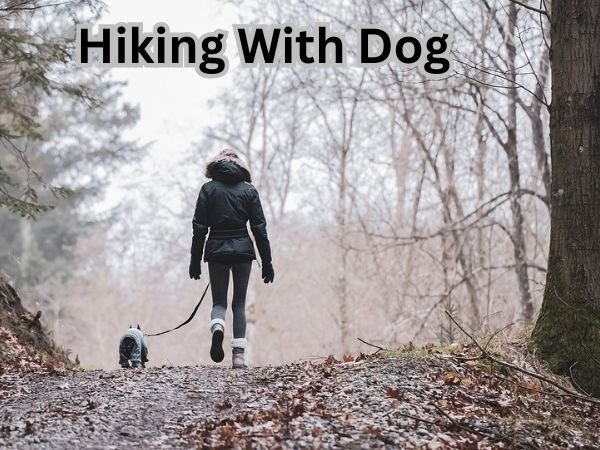
Why is hiking with dog such a great experience? Hiking with your dog is a wonderful way to bond, stay active, and share the beauty of nature. Dogs love the outdoors, and their enthusiasm is contagious. With proper preparation, hiking can become something you both look forward to every weekend!
But before you hit the trail, it’s essential to understand how to keep your dog safe. Whether you’re a first-time hiker or a seasoned trekker, following some basic rules ensures that both you and your dog have a safe, enjoyable time exploring.
Here are eight safety rules every owner should read before hiking with dog.
1. Know Your Dog’s Limits-Hiking With Dog
Hiking With Dog- Not all dogs are made for hiking. Consider your dog’s breed, age, and fitness level. For example:
- Small breeds like Chihuahuas may tire quicker than hardy working breeds like Labrador Retrievers.
- Puppies and senior dogs may struggle with long or uneven trails.
- Start with shorter, easier trails that suit your dog’s energy and stamina. Keep an eye on any signs of exhaustion, like excessive panting, slowing down, or lagging behind.
Tip
- Schedule a visit to your vet before your first hiking trip, especially if your dog is older or has health issues. This ensures they’re fit for the adventure.
2. Pick Dog-Friendly Trails
Hiking With Dog- Before planning your hike, research and choose trails that allow dogs. Some parks have restrictions or require dogs to stay on-leash at all times for safety reasons.
Look for trails with:
- Clear paths and minimal hazards (like cliffs or thorny underbrush)
- Access to shade and water
- Dog-friendly reviews from other pet owners
Tip
- Check local park rules online before heading out. You don’t want surprises when you arrive.
3. Pack Essentials for Your Dog
Hiking With Dog- Just like you prepare a pack for yourself, your dog needs their hiking essentials. Bring along:
- Water and Collapsible Bowl: Dehydration can heat dogs fast. Always carry clean drinking water for your pup.
- High-Energy Snacks: Dogs burn calories quickly. Pack dog-friendly treats or kibble to keep their energy up.
- Leash and Harness: Even if the trail allows off-leash hiking, carrying a leash is essential for unexpected situations.
- First-Aid Kit: Include items like bandages, antiseptic wipes, and paw balm for minor injuries.
- Waste Bags: Leave no trace! Clean up after your dog to keep the trail eco-friendly.
Tip
- Consider dog boots if the trail has rocky or rough terrain. They’ll protect sensitive paws from cuts or burns on hot surfaces.
4. Train Basic Commands for Safety
- Good training is essential when hiking with your dog. Commands like “Stop,” “Leave it,” and “Come” can prevent dangerous situations like eating something toxic or wandering too far ahead.
- Start practicing commands at home or in a nearby park. Build your dog’s attention span and recall skills before venturing into new environments.
Tip
- Bring a favorite toy or treat to reward your dog during the hike. It keeps them focused and reinforces good behavior.
5. Be Aware of Wildlife
- Hiking With Dog- Hiking often means sharing the trail with wildlife. While curious dogs may want to chase squirrels, birds, or even larger animals, this can lead to danger for both your dog and the wildlife.
- Keep your dog leashed in areas where wildlife is common. Always stay alert for signs of animals nearby, such as tracks or rustling bushes.
Tip
- Avoid hiking at dawn or dusk, when many wild animals are more active.
6. Monitor Your Dog’s Behavior
Hiking With Dog- While hiking, closely observe your dog for signs of distress, such as:
- Limping or favoring a paw
- Heavy panting, drooling, or lagging behind
- Sudden whining or barking
- Take frequent breaks to give your dog time to rest, hydrate, and recover.
- If the trail seems too challenging or your dog is struggling, don’t hesitate to turn back. Safety always comes first.
Tip
- If you’re hiking in a hot climate, be extra cautious. Avoid midday hikes and look for shady trails to protect your dog from heatstroke.
7. Protect Against Fleas, Ticks, and Parasites
- Dogs are exposed to fleas, ticks, and other parasites while hiking. Ticks can carry diseases like Lyme disease, so it’s important to protect your dog in advance.
- Before your hike, use a veterinarian-approved flea and tick treatment. Afterward, thoroughly check your dog’s fur and paw pads for ticks.
Tip
- Pay special attention to areas like under the ears, armpits, and tail base, where ticks often hide.
8. Respect Other Hikers
Hiking With Dog- Not everyone feels comfortable around dogs. Be considerate of other hikers by:
- Keeping your dog under control at all times
- Yielding the trail to others when necessary
- Preventing your dog from jumping on or barking at strangers
By respecting others, you help ensure that trails stay open and welcoming to pet owners.
Tip
- If you pass another hiker with a dog, give both dogs space to avoid unnecessary tension.
Why Hiking with Your Dog is Worth the Effort
Hiking with dog requires preparation, but the rewards are endless. You’ll watch your furry friend explore new sights, sounds, and smells while improving their fitness and mental stimulation. More importantly, it strengthens the bond you share with your dog.
But remember, every trail is a new adventure, and safety is key. Taking the time to plan and prepare ensures unforgettable experiences for both you and your four-legged hiking buddy.
Start Planning Your Next Adventure Today!
Hiking with dog is one of life’s greatest joys, but it’s also a shared responsibility. By following these 8 safety rules, you’re not just keeping your dog safe; you’re creating a lifetime of happy, healthy adventures together.
Looking for more tips or dog-friendly trail recommendations? Leave a comment below or share your favorite hiking-with-dog moments!
FAQ
Can I take my dog on any hiking trail?
No, not all trails allow dogs. Check trail regulations before heading out to ensure dogs are permitted and if they must be leashed.
What should I bring when hiking with my dog?
Bring water, a collapsible bowl, leash, poop bags, dog-friendly snacks, and a basic first-aid kit.
How far can dogs safely hike?
It depends on your dog’s breed, age, and fitness. Start with short hikes and gradually build up. Always watch for signs of fatigue.
Should my dog be off-leash while hiking?
Only if the trail allows it and your dog has excellent recall. Keeping your dog leashed helps protect wildlife, other hikers, and your dog.
What if my dog gets injured on a hike?
Carry a pet first-aid kit. For serious injuries, stop hiking and seek veterinary help immediately. Know the nearest vet before you go.



